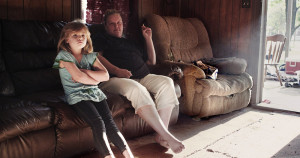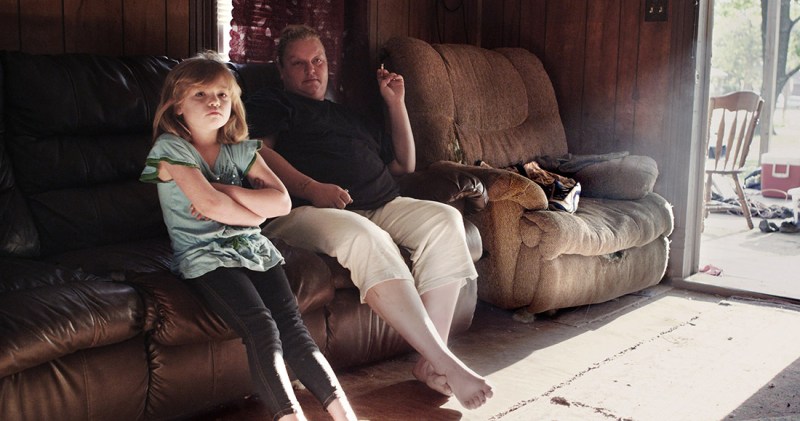
Rich Hill— an ironically-named town in rural Missouri, where more than 27 percent of the population lives below the poverty line— serves as the backdrop for Tracy Droz Vargos’s latest film, “Rich Hill.”
From the director of “Be Good, Smile Pretty” comes a documentary that puts an unforeseen face to the experience of rural American poverty— that is, a teenage face. The film provides an up-close look into the lives of its young, male protagonists: Appachey, Andrew and Harley. The result is an honest, heartfelt look into the experiences of a sector of the American population that, as Vargos said, is “often overlooked.”
The film provides an up-close look into the lives of its three teenage protagonists: Appachey, Andrew and Harley. Though each adds his own charismatic storyline to the film, all put an unforeseen face to the experience of rural American poverty. The result is an honest look into the experiences of a sector of the American population that, as Vargos said, is often “overlooked.”
Vargos talked with us about pushing the boundaries of documentary-making, the challenges low-income families face in rural America and the power of storytelling.
TSD: I’ve heard that you spent a lot of time selecting the [three boys] who were featured in the film. I’m curious as to why you chose them and why you chose three young boys as opposed to adults or girls.
Vargos: We cast a wide net, but we started focusing in pretty soon after… we met Appachey on our first trip and were really drawn to him. And then we met Harley and Andrew on our second trip and were really drawn to them as well. We knew that we wanted to shed light on families that were living in poverty… we didn’t know that kids would be the voice. But when we met these boys, it kind of clicked, in part because they still had some measure of hope. When we talked to their parents, their hope was much more muted.
Families like those in our film are often so easily dismissed… It’s like, “It’s their own choice, or they’re just not working hard enough, or [because of an] inferior moral compass that they find themselves where are they are, and if they just made better choices or worked harder, they wouldn’t be poor.” We really witnessed and felt and experienced the unequal playing field and what it’s like to live in such a vulnerable place as these families do, where one single mishap can really be devastating. One eviction can bring in a move, a loss of medical care, and a new school… it just snowballs.
TSD: In particular, the boys didn’t have, except for Andrew, an active father figure, and that was really striking. What is the role model for these boys?
Vargos: We knew that we wanted to tell a very intimate story. So, to do that, we couldn’t overpopulate it. You had to get as specific as you could. Ultimately, this film wanted to be about these three kids.
In terms of girls and the experience of girls, part of the filming of “Rich Hill” has inspired another film that I’m working on right now, and the focus of that happens to be a young woman who has a young son. The intention with this film is to follow her and her son through the first five years of their family. She navigates motherhood. It’s sort of the prequel to “Rich Hill,” because all of the moms in “Rich Hill” were teenagers when they became parents. Appachey’s mom, Delena, talks about when that happened. She kind of stopped short and didn’t have hopes and dreams from that point on. That seems like such a moment in time where hope is lost or not.
TSD: You ended up with over 400 hours of footage, but it was a 92-minute film. I’m curious how you chose which moments to put in the film, and to what degree you felt like you needed to be honest.
Vargos: Filmmaking is always subjective, so whose truth… that’s not an absolute thing. And the 450 hours, we’d cast a rather wide net at first and then focused it down. I think the hardest part was, there were a couple of other families we spent a good amount of time with, and in coming in on our final cut, we couldn’t overpopulate the film. We had to think about our audience and the audience’s experience and tracking so many people. In writing, they say it’s like killing your darlings. It does feel that way. You’re saying, okay, well, not every person has a place in this film. But hopefully the film will do everyone justice in being made and being more accessible, because we haven’t crammed in every storyline.
TSD: With regards to the filmmaking, how do you combine the cinematography and artistry of filmmaking with stories that are so heavy in themselves?
Vargos: We wanted to give these families a cinematic treatment, so that informed our camera choice, that informed our shooting style. We wanted these kids and these families to get a heroic treatment because it wasn’t something we’d seen before. Often there’s reality TV where these families are reduced to statistics. That’s kind of a shock value image, and that’s it.
We wanted to get past the mess and deeper. That meant that we were there for stressful times and things that were intense, and we were there for things that were joyful and moments of love and connection with the families. When it was stressful, we felt that. It was hard. You wish sometimes that you could wave a magic wand and make it better, but what we could do as filmmakers was bear witness to it.
You talked about all the footage that we have, and in terms of telling the truth, there was some footage that we felt would push an audience away more than bring them closer, so it was a balance. I think there were times when things didn’t show folks in the best light, or maybe wasn’t true overall. It may have been what was happening in the moment, but wasn’t our experience over the course of 18 months, so we didn’t include it. We didn’t just want to show you all the hardest stuff, because that was a moment, and maybe that would’ve been the most sensational thing to do.
TSD: The film is serving projects that help rural, low-income families. How involved have you been in that process, and what has been your reaction?
Vargos: I’ve been very involved in that process. For me, that was a very important element of this film. We didn’t want the film itself, the narrative of the story and the emotional journey we wanted to take audiences on to be layered with policy or statistics. But [regarding] the work around the film, we started talking early on with educators and with the Department of Social Services, and we’re really excited about the work that is happening around this film right now.
It’s been screened twice by the Department of Education, had a Capitol Hill screening, [and] there’s a pilot program that’s being developed with the Missouri division of Social Services around training all the social workers in the state of Missouri, and Teach for America is going to use it with its teacher training programs. I’m pretty excited about that, and I’ve been as involved as I possibly can in… making the film available and participating in discussions with them… I’m writing a discussion guide right now. I hope that the film can continue to have these families these part of an important conversation.
Often social services [will] look at a distinct infraction in a kid and… treat or deal with that one thing as opposed to a whole family approach… and often social services agencies are kind of silo-ed. There’s a movement in this film supporting not having a silo approach, in… having these agencies talk to each other… looking at multi-generations when families need support and help and what that means… and… how supporting the mother can support the kids and vice versa.
This interview has been condensed for space considerations. For the full transcript, please visit stanforddaily.com.
Contact Madeleine Han mhan95 “at” stanford.edu.
